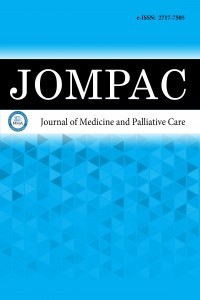1.
Plaud B, Baillard C, Bourgain JL, et al. Guidelines on musclerelaxants and reversal in anaesthesia. Anaesthesia, Crit Care PainMed. 2020;39(1):125-142.
2.
Bösenberg AT. Pediatric anesthesia in developing countries. CurrOpin Anaesthesiol. 2007;20(3):204-210.
3.
Cherian MN, Merry AF, Wilson IH. The World HealthOrganization and anaesthesia. Anaesthesia. 2007;62(1):65-66.
4.
Tonner PH. Balanced anaesthesia today. Best Pract Res ClinAnaesthesiol. 2005;19(3):475-484.
5.
Khan ZH, Hajipour A, Zebardast J, Alomairi SR. Muscle relaxantsin anesthesia practice: a narrative review. Arch Anesthesiol CritCare. 2018;4(4):547-552.
6.
Savarese JJ, Ginsburg S, Lee SM, Kitz RJ. The pharmacologyof new short-acting nondepolarizing ester neuromuscularblocking agents: clinical implications. Anesthesia Analgesia.1973;52(6):982-988.
7.
Belmont MR, Lien CA, Quessy S, et al. The clinicalneuromuscular pharmacology of 51W89 in patients receivingnitrous oxide/opioid/barbiturate anesthesia. J Am Soc Anesthesiol.1995;82(5):1139-1145.
8.
Kim JH, Lee YC, Lee SI, et al. Effective doses of cisatracuriumin the adult and the elderly. Korean J Anesthesiol. 2016;69(5):453-459.
9.
Lien CA, Belmont MR, Abalos A, et al. The cardiovasculareffects and histamine-releasing properties of 51W89 in patientsreceiving nitrous oxide/opioid/barbiturate anesthesia. J Am SocAnesthesiol. 1995;82:1131-1138.
10.
Heier T. Muscle relaxants. Tidsskrift Praktisk Med, Ny Raekke.2010;130(4):398-401.
11.
Aldrete JA, Kroulik D. A postanesthetic recovery score. AnesthesiaAnalgesia. 1970;49(6):924-934.
12.
Littlejohn IH, Abhay K, el Sayed A, Broomhead CJ, DuvaldestinP, Flynn PJ. Intubating conditions following 1R CIS, 1’RCIS atracurium (51W89). A comparison with atracurium.Anaesthesia. 1995;50(6):499-502.
13.
Bluestein LS, Stinson LW, Lennon RL, Quessy SN, Wilson RM.Evaluation of cisatracurium, a new neuromuscular blocking agent,for tracheal intubation. Can J Anaesthesia. 1996;43(9):925-931.
14.
Lepage JY, Malinovsky JM, Malinge M, et al. Pharmacodynamicdose-response and safety study of cisatracurium (51W89) in adultsurgical patients during N2O-O2-opioid anesthesia. AnesthesiaAnalgesia. 1996;83(4):823-829.
15.
Deriaz H, Schmautz E, Vrillon M, Lienhart A. Evaluation of51W89 for endotracheal intubation and repeated doses. In:Fukushima K, Ochiai R, eds. Muscle Relaxants: Physiologic AndPharmacologic Aspects. Springer: 1995:387.
16.
Hemmerling TM, Donati F. Neuromuscular blockade at thelarynx, the diaphragm and the corrugator supercilii muscle: areview. Can J Anaesthesia. 2003;50(8):779-794.
17.
Crystal R, Malone AA, Eastwood DM. Motor points forneuromuscular blockade of the adductor muscle group. ClinOrthop Relat Res. 2005;1;196-200.
18.
Mencke T, Schmartz D, Fuchs-Buder T. Neuromuscularmonitoring. Der Anaesthesist. 2013;62(10):847-861.
19.
Bryson HM, Faulds D. Cisatracurium besilate: a review of itspharmacology and clinical potential in anaesthetic practice.Drugs. 1997;53(5):848-866.
20.
Reich DL, Mulier J, Viby-Mogensen J, et al. Comparison ofthe cardiovascular effects of cisatracurium and vecuroniumin patients with coronary artery disease. Can J Anaesthesia.1998;45(8):794-797.
21.
Konstadt SN, Reich DL, Stanley TE, et al. A two-centercomparison of the cardiovascular effects of cisatracurium(Nimbex) and vecuronium in patients with coronary arterydisease. Anesthesia Analgesia. 1995;81(5):1010-1014.
22.
Reich DL, Hollinger I, Harrington DJ, Seiden HS, ChakravortiS, Cook DR. Comparison of cisatracurium and vecuronium byinfusion in neonates and small infants after congenital heartsurgery. J Am Soc Anesthesiolog. 2004;101(5):1122-1127.
23.
Meretoja OA, Taivainen T, Wirtavuori K. Pharmacodynamiceffects of 51W89, an isomer of atracurium, in children duringhalothane anaesthesia. Br J Anaesthesia. 1995;74(1):6-11.
24.
Meretoja O. Update on muscle relaxants. Paediatr Anaesthesia.2004;14(5):384-386.
25.
Bergeron L, Bevan DR, Berrill A, Kahwaji R, Varin F.Concentration-effect relationship of cisatracurium at threedifferent dose levels in the anesthetized patient. J Am SocAnesthesiolog. 2001;95(2):314-323.
26.
Sorooshian SS, Stafford MA, Eastwood NB, Boyd AH, HullCJ, Wright PM. Pharmacokinetics and pharmacodynamics ofcisatracurium in young and elderly adult patients. J Am SocAnesthesiolog. 1996;84(5):1083-1091.
27.
Keegan RD. Muscle relaxants and neuromuscular blockade. In:Grimm KA, Lamont LA, Tranquilli WJ, Greene SA, RobertsonSA. Veterinary Anesthesia and Analgesia: The Fifth Edition ofLumb and Jones. John Wiley & Sons: 2015:260-276.
28.
Bowman WC. Neuromuscular block. Br J Pharmacol. 2006;147(S1):S277-S286.
29.
Brandom BW, Westman HR. Effects of 0.86 mg/kg cisatracuriumin an infant. J Am Soc Anesthesiolog. 1996;85(3):688-689.

